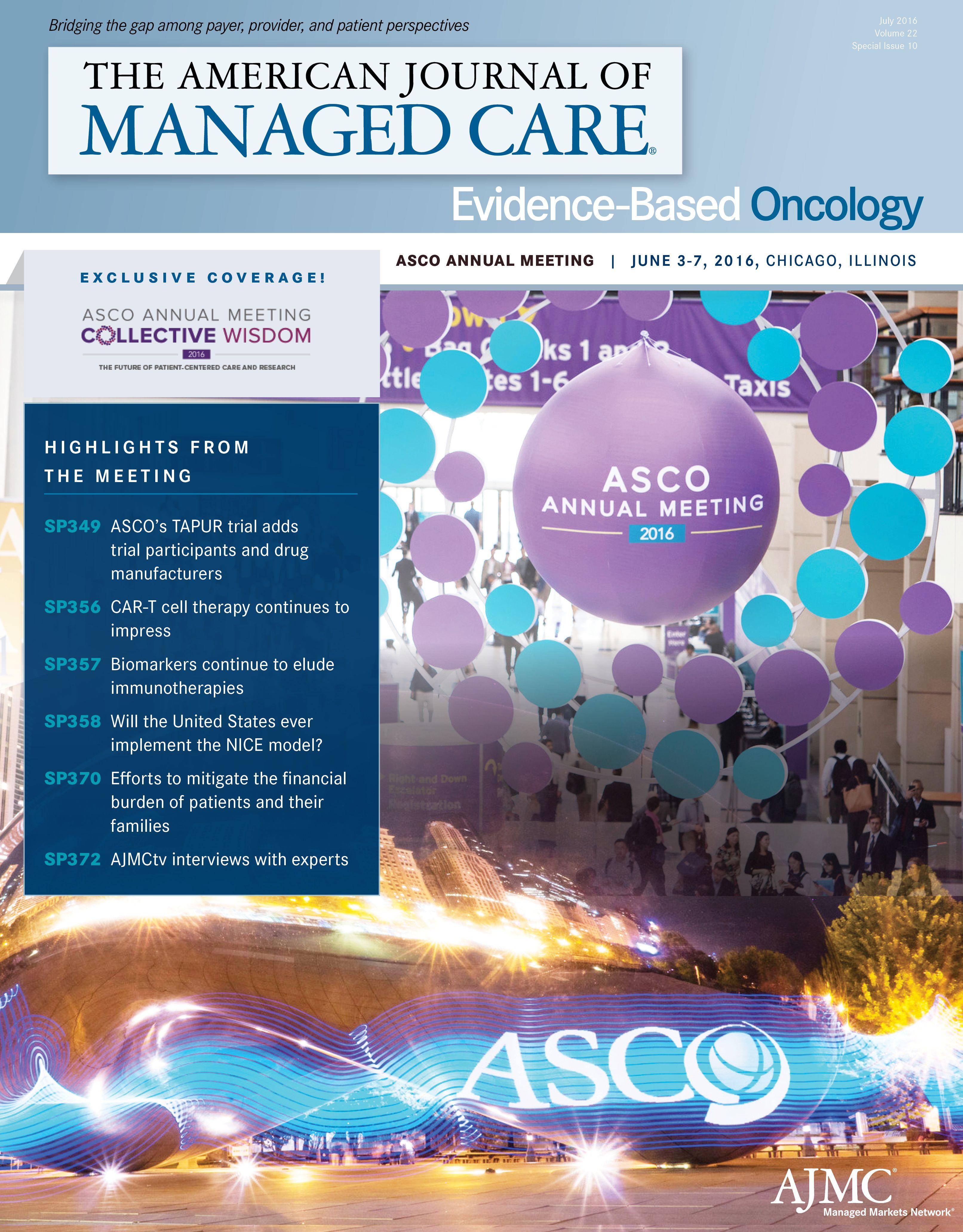Publication
Article
Evidence-Based Oncology
Aggressive Cancer Care Widely Used Among Patients at the End of Life
Author(s):
Many patients, 65 years or younger, are still receiving aggressive cancer treatment in their final months of life despite Choosing Wisely recommendations encouraging symptom-directed palliative care.
Many patients, 65 years or younger, are still receiving aggressive cancer treatment in their final months of life despite ASCO’s Choosing Wisely recommendations encouraging symptom-directed palliative care, according to research presented at the 2016 annual meeting of the American Society of Clinical Oncology (ASCO).
Researchers analyzed health claims data between 2007 and 2014 and discovered that 65% of the patients with advanced solid tumors received at least 1 form of aggressive care within the patient’s last 30 days of life. Aggressive care in this study1 was defined as either hospital admission, an intensive care unit (ICU) admission, or an emergency room visit, as well as a chemotherapy or radiation treatment.
The study examined 28,000 patients from 14 different states, all of whom were younger than 65 years, and were diagnosed with either metastatic lung, colorectal, breast, pancreatic, or prostate cancer. The studied group passed away between January 2007 and December 2014.
The research team discovered that the most common form of aggressive care at the patient’s end of life was a hospital admission, occurring in 62% to 65% of patients. Less than one-fourth of the study participants died in the hospital instead of at home, which prompted the study authors to suggest that many patients continued to seek aggressive forms of treatments when other options, such as symptom-directed palliative care could have been given at home.
Additionally, the researchers found that only 14% to 18% of patients utilized hospice care, more patients sought chemotherapy treatment than radiation—24% to 33% and 6% to 21%, respectively—and ICU admissions occurred in nearly 1 in 5 patients. The research project came in response to ASCO’s Choosing Wisely recommendations. Lead study author, Ronald C. Chen, MD, MPH, associate professor of radiation oncology at the University of North Carolina in Chapel Hill, and his research team wanted to understand if this guideline helped change the delivery of care, specifically in patients with advanced solid tumors.
In a 2012 issue, ASCO’s Choosing Wisely “Top-Five” List of recommendations encouraged symptom-directed palliative care instead of a cancer-directed therapy in patients with advanced solid tumors who are less likely to benefit from the aggressive treatment. Chen explained the importance of determining the appropriate means of care for every patient—a one-size-fits-all approach may not work for every patient nearing end of life.
“While it can be difficult to predict when a patient is nearing his or her final month of life, we need to do a better job of scaling back disease-directed treatment, and transitioning patients to symptom-directed end-of-life care sooner,” Chen said in a statement. “Intensive care at the end of life remains appropriate for some patients. Still, we need more education of both patients and physicians to improve conversations about goals and expectations.” He added that while ASCO’s recommendations were a critical first step in addressing the use of aggressive care at the end of life, he advised that guidelines alone will not change the widespread practice.
EBO
“We need better ways of educating physicians and patients about palliative care and hospice, and we need to make these types of care more accessible,” Chen said.
Reference
- Chen RC, Falchook AD, Tian F, et al. Aggressive care at the end-of-life for younger patients with cancer: Impact of ASCO's Choosing Wisely campaign. J Clin Oncol. 2016; 34 (suppl; abstract LBA10033).





